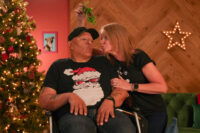Earlier this month, the Bishop of Blackburn, Rt Revd Philip North, confirmed that Dean Peter Howell-Jones had been suspended under the Clergy Discipline Measure. That announcement followed the release of an independent safeguarding audit conducted by INEQE, which described safeguarding arrangements at the Cathedral as “inadequate and requiring immediate action.”
Planning a night out? See the live What’s On in Blackburn calendar.
In response, Canon Andrew Horsfall was swiftly appointed as Interim Dean. The Bishop praised Horsfall’s “senior management experience” and “pastoral sensitivity,” stating that he is “the ideal person to take forward the essential work of reform.” Horsfall’s first official act in his new role was to meet with the Cathedral Chapter and join the diocesan Vision and Strategy Team.
While the Cathedral has published general statements on its website and included notices in its weekly order of service, the lack of specific detail and the placement of safeguarding updates—following items like choir schedules and mentions of a summer BBQ—has raised questions about the tone and urgency of the response. Some observers argue that, given the seriousness of the situation, safeguarding should be addressed with greater transparency and prominence.
Two recent congregational meetings, held on July 13 and 20, followed the announcement of the audit’s findings and the suspension of a senior figure. According to service sheets, the meetings were intended to reflect on the audit and the leadership changes. Bishop North himself was present at the second meeting, inviting informal conversations and promising “to listen, respond and support” the community.
A Pattern of Promises—and Failures
This is not the first time Blackburn’s church leadership has vowed to change. In June 2019, Bishop North, then Bishop of Burnley, called for an independent national safeguarding structure and publicly condemned “evasive talk of culture change.” He told the BBC that the Church needed “a spirit of repentance” and had too long “placed the reputation of the institution above the needs of the vulnerable.”
Yet, six years later, the 2025 audit found ongoing problems, including poor record-keeping, inadequate DBS checks, and a culture where safeguarding leadership was compromised by conflicts of interest.
In 2021, then-Bishop Julian Henderson said he was “utterly horrified” by past cases of abuse and that “cover-up and trying to silence voices” within the Church was “reprehensible and unacceptable.” Soon after, however, the Church was embroiled in controversy when it emerged that Canon Andrew Hindley—who had faced multiple allegations and five police investigations—received a financial payout after legal action, despite a past NSPCC assessment saying he posed “a risk of significant harm to children.” This case was ongoing in 2021, when the Bishop referenced covering up was “reprehensible and unacceptable.”
In 2024, during an interview on BBC North West Tonight, Dean Peter Howell‑Jones, the Dean of Blackburn, was asked if he trusted the Church of England in light of the scandals at Blackburn Cathedral. In response, he replied:
“I categorically do not.”
A Diocese Haunted by History
Blackburn’s problems are not confined to the Cathedral. The Diocese has faced repeated safeguarding controversies over the last decades.
Despite such acknowledgements, the 2025 INEQE audit found that safeguarding leadership remained “inappropriate and unsustainable.”
What Happens Now?
Blackburn Cathedral has accepted all 28 recommendations from the latest audit and claims to be implementing urgent reforms. But for many, the question remains whether this will finally lead to lasting structural change—or if it is just the latest in a long line of promises.
Meanwhile, the Diocese has promised further engagement and reform. But critics may point to a recurring cycle: a crisis emerges, contrition is expressed, reform is pledged—and then, history repeats.
As Bishop North himself once said: “Evasive talk of culture change just won’t do.” Whether Blackburn Cathedral and its Diocese have truly understood that lesson is still far from clear.







